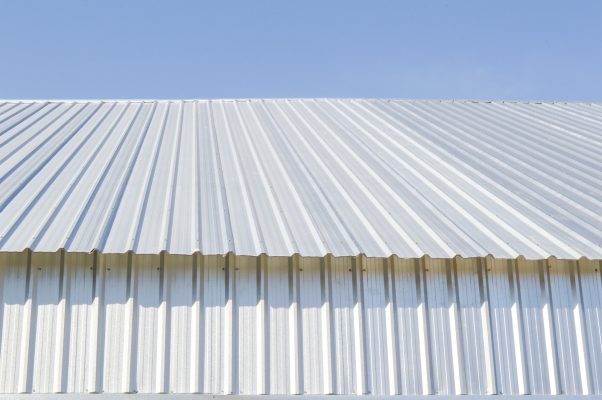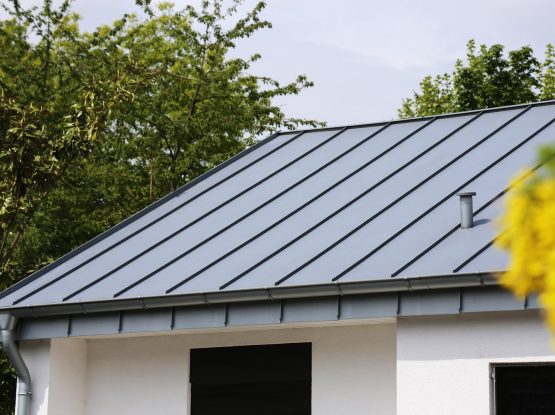
Zinc standing seam metal roof has become a popular choice for architectural roofing and wall cladding in New Zealand. Homeowners and builders appreciate its combination of durability, weather resistance, and modern aesthetics.
The sleek appearance of zinc complements both contemporary and traditional architectural styles, making it a versatile option for residential and commercial buildings.
As the demand for long-lasting and low-maintenance building materials increases, zinc cladding stands out as an attractive solution. Its ability to develop a natural patina over time enhances its protective properties, reducing the need for frequent maintenance.
This blog explores zinc cladding in detail, including its benefits, applications, and suitable alternatives for New Zealand homes.
What is Zinc Cladding?
Zinc cladding is a metal cladding system commonly used for both roofing and walls. It consists of high-quality zinc, which provides excellent protection against harsh weather conditions while maintaining a sophisticated look.
Features of Zinc Cladding
One of the key reasons zinc cladding is a preferred choice is its corrosion resistance. When exposed to air and moisture, zinc forms a protective layer called a patina. This natural coating helps prevent rust and degradation, allowing zinc to last for decades, even in coastal environments.
Sustainability is another major advantage. Zinc is 100% recyclable, making it an environmentally responsible material for construction projects.
Its long lifespan further contributes to sustainability, as it reduces the frequency of material replacement.
Applications in NZ
Zinc cladding is widely used in New Zealand for both modern and heritage architecture. Its adaptability allows it to be incorporated into contemporary home designs as well as restorations of older buildings. Many homeowners choose zinc roofing for zinc standing seam metal roof installations due to its water-resistant properties and ability to withstand New Zealand’s unpredictable weather patterns.
Zinc’s versatility also extends to wall cladding, providing a unique visual element that evolves over time. The patina gives buildings an aged yet refined appearance without compromising structural integrity.
Maintenance and Longevity
Zinc naturally develops its own protective layer. This feature reduces maintenance requirements. It is a practical choice for homeowners seeking low-upkeep materials.
With proper installation, zinc roof cladding can last for over 50 years, even in harsh climates. The material resists cracking, chipping, and fading, maintaining its aesthetic appeal for decades.
Regular inspections and occasional cleaning can further prolong its lifespan.
Why Zinc Cladding Fits Perfectly with NZ Architecture
New Zealand’s diverse landscape and climate require building materials that can withstand varying environmental conditions while maintaining an appealing design. Standing seam cladding meets these requirements by offering high resistance to wind, rain, and UV exposure.
Its ability to blend seamlessly with different architectural styles makes it suitable for various settings, from urban homes to rural retreats. The natural finish compliments the modern and minimalist trends seen in contemporary New Zealand architecture.
Several projects across New Zealand have successfully incorporated zinc cladding solutions to achieve both functionality and aesthetic excellence. Builders often choose this material for its ability to adapt to different architectural visions without compromising performance.
Why Should You Use Zinc Cladding?
For homeowners exploring long-term building solutions, zinc cladding provides multiple advantages.
Durability and Minimal Maintenance
Zinc is highly resistant to corrosion, making it ideal for regions with high humidity or exposure to salt-laden air. The patina layer that forms over time enhances durability while reducing maintenance requirements. Unlike materials that require painting or sealing, zinc retains its protective properties naturally.
Weather Resistance and Longevity
Zinc performs well in various climates, including areas that experience heavy rainfall or strong winds. Unlike some cladding materials that deteriorate under extreme weather conditions, zinc roofing remains structurally sound and visually appealing for decades.
Versatility in Design
Zinc cladding allows for a range of architectural styles, from traditional to contemporary. Its ability to be shaped into different forms makes it suitable for curved surfaces, intricate facades, and standing seam cladding installations.
Cost-Effective Investment
Although the initial cost of zinc standing seam metal roof installations may be higher than some alternatives, its long lifespan and low maintenance costs make it a worthwhile investment. Homeowners benefit from reduced repair expenses over the years, making zinc a cost-effective option for those planning long-term property improvements.
Modern Aesthetics
Zinc’s natural tones and evolving patina contribute to its visual appeal. Whether used for zinc roof installations or wall cladding, zinc provides a sleek and elegant finish that enhances the overall design of a home.
Sustainability
Zinc is an eco-friendly material due to its recyclability and long life cycle. Choosing sustainable materials for construction helps reduce environmental impact, making zinc a responsible choice for modern homes.
Alternatives to Zinc for Cladding Material
While zinc cladding nz offers numerous benefits, homeowners may also consider alternative materials based on budget, design preference, or specific building requirements. Some of the common alternatives include:
Copper
Copper cladding shares similarities with zinc in terms of durability and weather resistance. Over time, it develops a green patina, which enhances its appearance and protective properties. Copper is often used in high-end architectural designs where a distinctive look is desired.
Aluminium
Aluminium cladding is a lightweight and cost-effective alternative. It is naturally corrosion-resistant and can be finished in various colours. While it does not develop a patina like zinc or copper, its affordability makes it a practical choice for budget-conscious homeowners.
Brass
Brass cladding provides a warm, golden appearance that can enhance architectural features. Like zinc and copper, it resists corrosion and weathers naturally over time. It is often chosen for projects that require a unique aesthetic.
Bronze
Bronze cladding offers a rich, dark finish that evolves over time. It is known for its strength and visual impact, making it suitable for buildings that require a distinctive and luxurious exterior.
Zinc Roofs: The Best Option for Many
Zinc standing seam metal roof solutions are popular in New Zealand due to their durability, low maintenance, and aesthetic versatility. Their ability to withstand harsh weather conditions while enhancing architectural appeal makes them a preferred choice for modern and traditional buildings alike.
For homeowners considering a long-term cladding solution, zinc offers a practical and sustainable investment. With its corrosion resistance, evolving patina, and design flexibility, zinc roofing provides an excellent balance of performance and visual appeal. While alternatives such as copper, aluminium, brass, and bronze also have their advantages, zinc cladding remains a leading option for those seeking a high-quality cladding material that lasts for decades.


